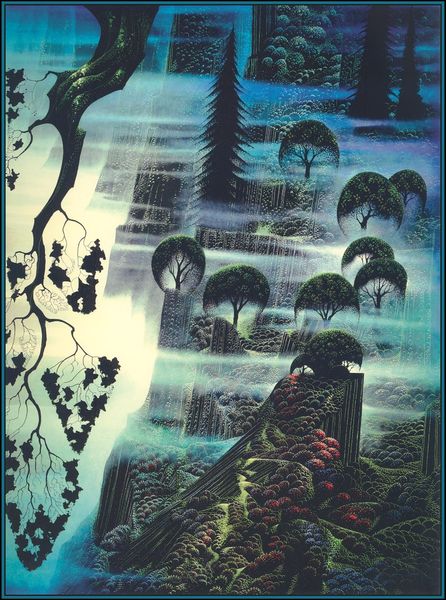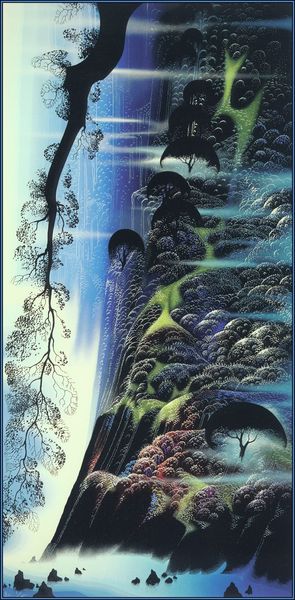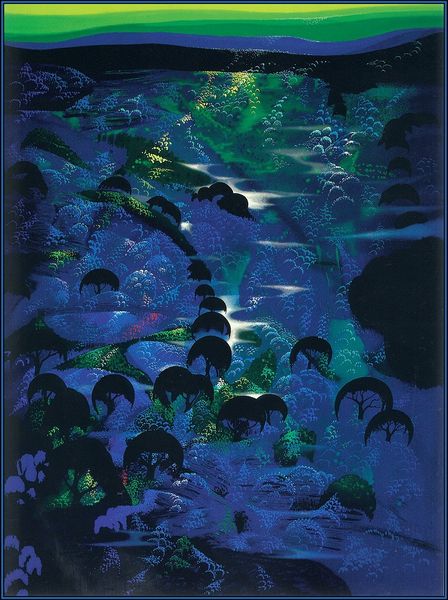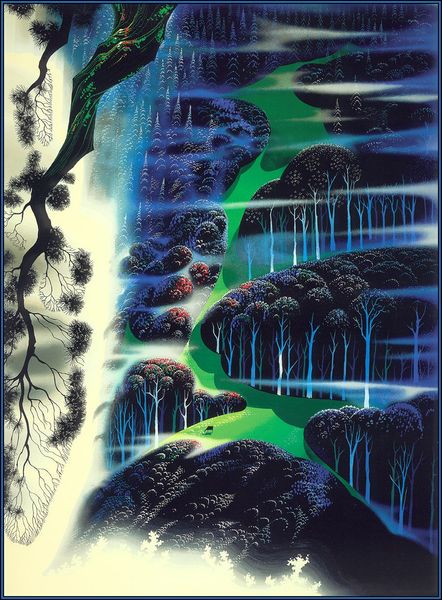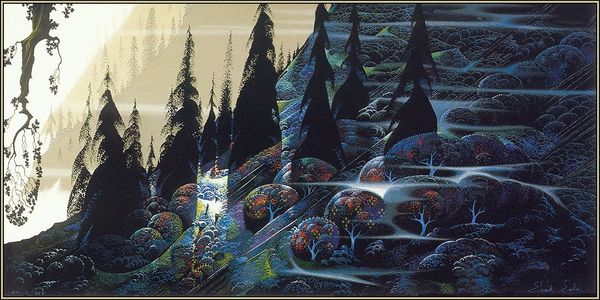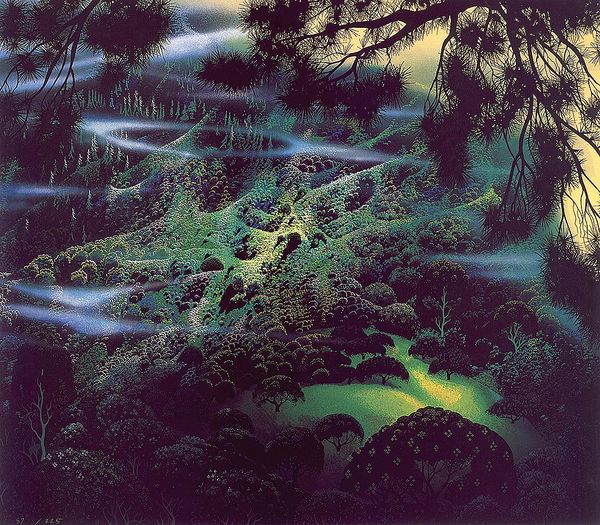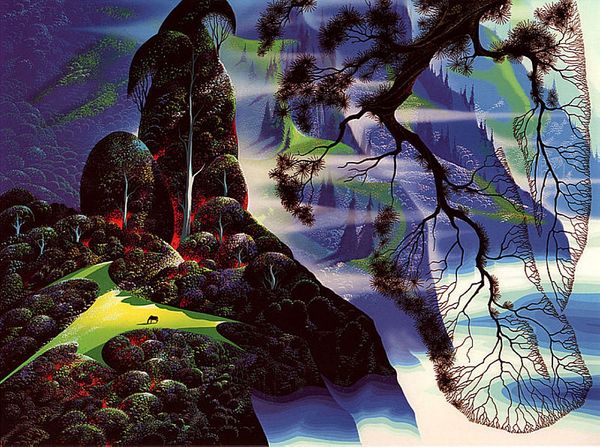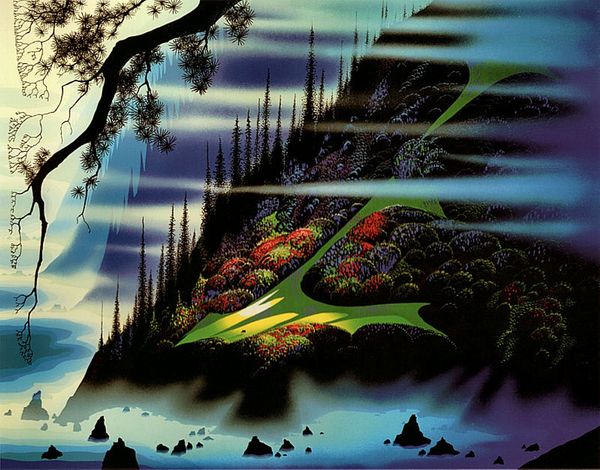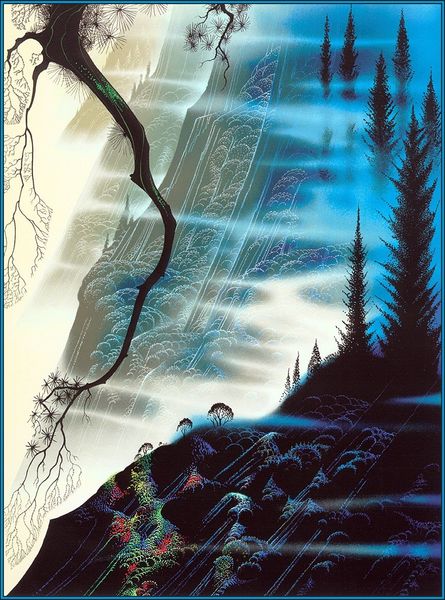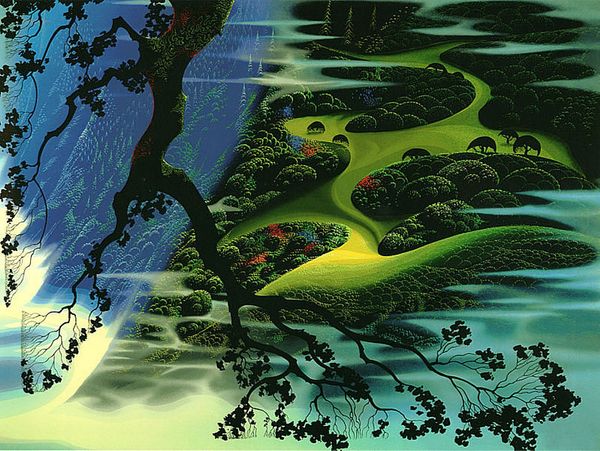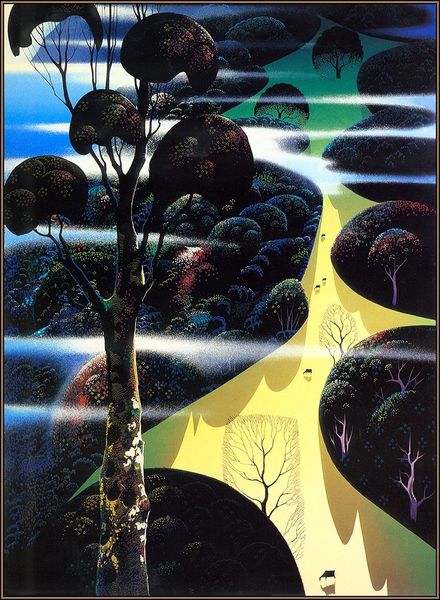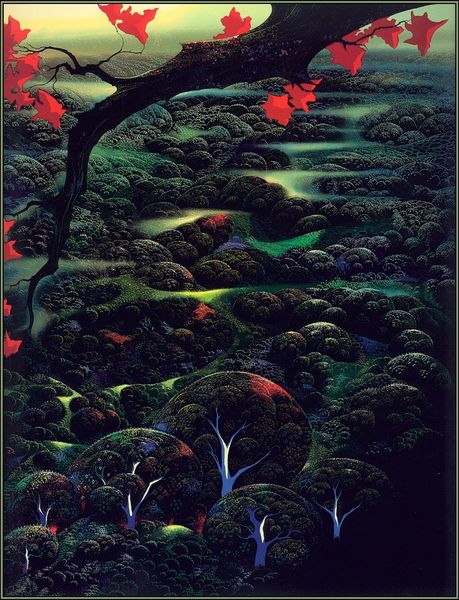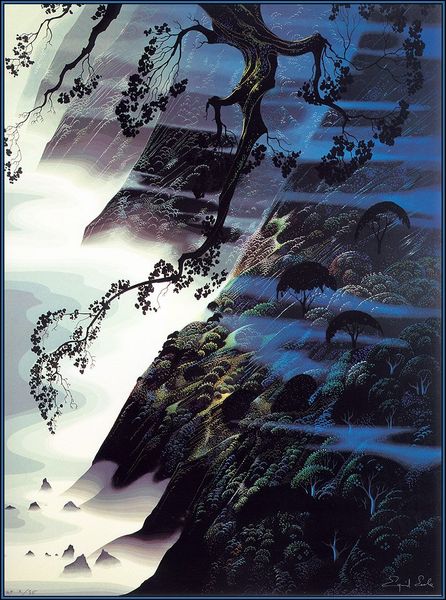
tempera, painting
#
tree
#
allegories
#
sky
#
abstract painting
#
tempera
#
symbol
#
painting
#
landscape
#
fantasy-art
#
figuration
#
handmade artwork painting
#
forest
#
symbolism
Copyright: Eyvind Earle,Fair Use
Curator: Looking at Eyvind Earle’s “Where Eagles Fly," the meticulous details, especially the textured trees against the vibrant sky, give it such a distinctive look. Editor: It reminds me of an intricately embroidered tapestry; I immediately focus on the physicality of the landscape—those meticulously placed, dark vertical forms rising out of what seems to be meticulously painted texture. Curator: Indeed, his work often carries the weight of allegories about nature and freedom. He was fascinated by how landscapes intersect with human aspirations and how such sceneries mirror our internal emotional states, often hinting at societal power structures that limit individuals' self-expression. Editor: That’s interesting, especially considering the work appears to be executed in tempera—an older, incredibly labor-intensive technique. The layering involved surely demanded extensive planning. It's fascinating to consider how Earle reconciles such an intensive artistic process with themes of 'freedom.' Curator: Tempera really highlights the color nuances here. It connects him with older traditions but also shows a real grasp of allegorical symbolism as seen in the Hudson River School landscapes which had very clear beliefs in manifest destiny, contrasting greatly with Earle's own, less optimistic philosophies. The recurring trees throughout create this echoing feeling... Editor: The trees, yes! Each sharply defined—they're almost manufactured rather than organic, bringing a systematic organization into this seemingly natural, 'free' space. Considering how Disney used his backgrounds, this fits perfectly. Was it a social commentary against enforced idealism within industry or American Society? Curator: It’s really food for thought when you factor in those intersections of identity and mass culture, reflecting mid-century anxieties about industrialization and loss of self in increasingly regulated structures... There’s a tension between this hyper-organized landscape and that search for something, anything, beyond societal restrictions, something raw and authentic. Editor: I’m left now seeing both his careful planning with the possibilities offered by materials available during post-war times that mirrored the drive for a perfect new world versus Earle's anxieties reflected in very tactile means! Curator: Absolutely! Looking at it through an intersectional lens opens doors for considering class, cultural, and socio-political dimensions of this artwork.
Comments
No comments
Be the first to comment and join the conversation on the ultimate creative platform.
